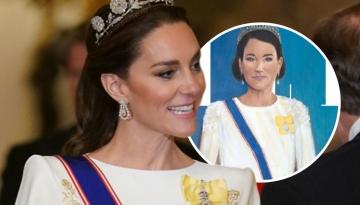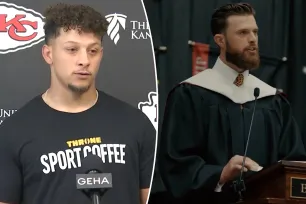Even the slightest tremor in Mammootty’s voice, without him having to resort to a full cry, can move someone to tears — is a sentiment all Malayali cinema lovers agree upon. His ability to effortlessly draw out and showcase deep emotions of his characters, while also ensuring each role is unique, has consistently garnered widespread acclaim, earning him the unofficial title of the GOAT (Greatest Of All Time).
But it can never be said that he has handled all other emotions as proficiently as he does sadness. Nevertheless, fully aware that he “isn’t a born actor” or innately talented, Mammootty has continually refined his skills and improved himself. When once asked who was the better actor between Mohanlal and Mammootty, ace Malayalam filmmaker Fazil immediately named Mammootty. He explained, “To compete against Mohanlal, who has a multitude of strengths, with just one or two talents is no small feat, and Mammootty has been doing that for years. Hence, he is the best actor.” One of the most self-aware thespians in India, Mammootty continues to refine his skills even at the age of 72, improving each day. His evolution as an actor is nothing short of mesmerising and his performances in comedic roles, especially in action comedies, underscore this. And now that his latest action comedy Turbo hits the screens, the hype is rightfully high.

Cinema Anatomy | 34 films, first State Award, exceptional performances and superstardom: How Mohanlal, at 26, altered the course of his journey in just one year
Early days
Unlike the physically flexible Mohanlal, who could easily improvise humorous lines and add something extra from his own pocket, especially in slapstick and exaggerated comedic moments, as seen in movies such as Aram + Aram = Kinnaram, Boeing Boeing, Mazha Peyyunnu Maddalam Kottunnu, Hello My Dear Wrong Number and Thalavattam, Mammootty initially attempted to tackle humour through over-the-top performances characterised by caricatured delivery of dialogues. Aware of his limitations, both he and filmmakers tended to avoid casting him in comedy-heavy roles. His early attempts in the genre, such as in Nanayam, Veendum Chalikkunna Chakram and Nandi Veendum Varika, where he only needed to deliver a few “funny” lines, highlighted his lack of physical agility and hence were not particularly impressive.
Understanding that his forte was serious characters, Mammootty mainly stuck to such roles and explored various genres within that realm, eventually emerging as a superstar through his character in New Delhi (1987) and earning widespread acclaim as a spectacular actor with his performances in Koodevide, Adiyozhukkukal, Athirathram, Ithiri Poove Chuvannapoove, Kanamarayathu, Yathra, Nirakkoottu and Anubandham, among others. Meanwhile, in an attempt to push his limits and explore new terrains, Mammootty tried his hand at a full-length comedy role in 1988 in Dennis Joseph’s Manu Uncle. Unlike earlier, the thespian’s handling of humour here showed significant improvement and it no longer felt as if comedy wasn’t his strong suit. His performance was very convincing and all his jokes landed perfectly. So, what changed? How did he suddenly become adept at comedy?
Watch Turbo trailer here:
An analysis of his subsequent comedy roles, which resonated well with audiences, reveals that he stopped attempting to emulate the style of others, especially in terms of physical comedy, and instead started focusing on portraying the characters well and honestly. By making the best use of his strengths and completely avoiding trying things he wasn’t good at, Mammootty immersed himself in the psyches of the characters and made keen efforts to meticulously bring them to life. This approach succeeded to a good extent as he gave utmost care to their various emotions and aced them in the process. Consequently, their comedic moments too worked well as they were in tune with the tone of the respective roles.
Despite being surrounded by a group of children, who drive the narrative forward, Mammootty didn’t try to match their style in Manu Uncle. Instead, he concentrated on authentically portraying the character of their guardian and this genuine approach allowed the comedy to flow naturally, especially in their interactions. He followed the same strategy in PG Viswambharan’s Carnivel and it once again proved successful.
Kottayam Kunjachan
While he managed to evoke big laughs in these movies, it was the action comedy Kottayam Kunjachan, helmed by TS Suresh Babu, that truly highlighted his enhanced abilities, with his performance in the titular role receiving widespread acclaim and setting a new standard in the genre. Unlike typical actioners where the hero is introduced early on, making them central to the first act, Kottayam Kunjachan makes his first appearance more than 30 minutes into the movie. Even when Kunjachan is introduced, he is not accompanied by a dramatic or massy BGM, but a comedic one, as he appears wearing a white kurta, kasavu mundu, white shoulder scarf and Ray-Ban shades — hardly the look of a goon or a don. In fact, the first image of him is more laugh-inducing than fear-evoking. However, as soon as he started speaking, it became evident that the actor wasn’t trying to be funny; instead, his authentic portrayal of a local thug, illiterate and only knowing how to make a living through goondaism, was naturally amusing. This was thanks in part to the humour in the script and his exceptional skill in effectively using dialects, which came in handy here, thus making Kunjachan immediately likeable.
Even in scenes where he ventured into exaggerated comedy, ignoring his inhibitions, Mammootty stayed true to the character’s nature and avoided going overboard like those actors extremely adept at comedy might have done. “Are you Pro Kottayam Kunjachan?” a local rowdy asks him and Kunjachan beams with pride hearing this as he realises he is beginning to gain a reputation beyond being just a goon. “‘Pro’ doesn’t stand for Professor,” he replies with a wide smile, “but proprietor instead. You aren’t well-versed in English, are you?” he adds, honestly, yet with a hint of sarcasm. The innocence of the Kottayam dialect further enhanced Mammootty’s delivery, making these moments impressive. Just as he excelled in the action sequences of Kottayam Kunjachan, Mammootty also brilliantly handled the comedic scenes, all while maintaining precise body language and the ever-memorable “Samvidhayakan Joshiy enne chathichaashane (Director Joshiy betrayed me, sir)” line perfectly illustrates this balance.
At the same time, Mammootty also realised that he didn’t have to hold back from doing comedy just because it wasn’t his strong suit and Kottayam Kunjachan was indeed an experience of a lifetime for him, wherein he let go of his inhibitions and began traversing the character’s path without fear. The remarkably hilarious scene where a drunk Kunjachan goes to his landlord’s place and threatens to finish him off, despite not being able to stand on his feet, underscored this transformation.
While subsequent films such as Kuttettan, Kalikkalam and Kanalkkattu showed him progressing in comedy using a similar approach, in Azhakiya Ravanan, Hitler, Megham and Chronic Bachelor, he masterfully infused elements of his own personality and public persona, thus enhancing his performances, while aligning them with the characters’ traits. Although his portrayals in Phantom, Pattalam and Thaskara Veeran were borderline dismal, the blame in these cases should rightfully go to the makers, as the movies were shoddy.
Rajamanikyam and Thommanum Makkalum
For an actor who struggled significantly in his initial years, 2005 showed how much Mammootty had improved, with two of his finest works in the action comedy genre releasing that year: Anwar Rasheed’s Rajamanikyam and Shafi’s Thommanum Makkalum, with the former eventually becoming one of the most iconic and celebrated characters in his career. Despite being released in the same year, his characters Bellary Raja and Shivan, respectively, were distinct in their mannerisms and overall conception and his flawless comedic timing left audiences in awe.
In both movies, Mammootty’s approach was to fully immerse himself in the characters, paying special attention to their distinct local accents, which allowed him to nail the comedic lines and situations effortlessly. His mastery of the Thiruvananthapuram slang in Rajamanikyam, delivering lines uniquely tailored to the character with precision, along with his unconventional flashy fashion choices and commitment to capturing the character’s essence, made the role iconic. While his performance in the action sequences was also impressive, as usual, it was Mammootty’s deep understanding of the character’s ethos, especially in emotional moments, that left a lasting impact on audiences. Thus, his dialogues like “Yevan puliyaanu ketta,” “Valathaattu nikkeda,” “Antharaas kuntharaas, avantammeda… thalle kalippu theeranillallu!,” “Ninakkithinu maasakkooliya divassakkooliya?,” “Intrillu aayittollu, intrillu aayittolle,” “Varkeycha, nammade vandeelu nenjinullil neeyanu thenaanu kuliraanu Fathima, enna paattukalokke ille?,” “Oru paayiraathrikku oru maniyara vaalilu muttiyappalanu ee chwodyam njan aadhyoyittu kekkanath: aaranu nee entharaanu ninakku vyendathennu” and “Nammalilley!” have become part of everyday Malayalee vocabulary.
In Thommanum Makkalum, on the other hand, his character was more rigid but had a hysterically humorous side. Mammootty’s chemistry with actors Rajan P Dev and Lal, who played his father and brother, significantly amplified the comedic moments and the thespian also showcased his evolved skill in evoking laughter through gestures and expressions as well and not just dialogues.
In subsequent action comedies like Thuruppu Gulan and Bhargava Charitham Moonam Khandam, which leaned more towards slapstick, Mammootty let go of more of his baggage and began approaching comedic characters in a way that primarily aimed to make kids laugh. Seeing this man, often referred to as the Vallyettan (elder brother) of the industry and considered a benchmark for Malayali masculinity, act and move around like a child was refreshing and resonated well with the audience, especially the target ones — kids. In Shafi’s Mayavi, he combined all these strategies for his character Mahi, delivering another blockbuster action comedy where his performance and handling of humour received widespread acclaim. As his initial lack of confidence, shyness and habit of limiting himself to only what he was good at faded away, Mammootty continued to improve unabashedly and delivered another blockbuster action comedy in 2008, Annan Thambi.
However, unlike Mohanlal, who could naturally enhance a subpar comedic moment and elevate it to at least a mediocre level, Mammootty was only as funny as the script and treatment allowed. The positive responses he received for Loudspeaker, Chattambinaadu, Pranchiyettan & the Saint and Best Actor contrasted with the criticism he faced for films like Love in Singapore, Ee Pattanathil Bhootham, Pokkiri Raja, Cobra, Thappana, Proprietors: Kammath & Kammath, Manglish, Bhaskar the Rascal and Madhura Raja underscore this point.
With his latest action comedy Turbo hitting the screens, expectations are obviously high due to the exceptional work he has done in the past in this genre. Now, it remains to be seen if Turbo Jose is worthy enough to join the ranks of Kottayam Kunjachan, Bellary Raja, Shivan, Gulan Kunjumon and Mahi.
Disclaimer: The copyright of this article belongs to the original author. Reposting this article is solely for the purpose of information dissemination and does not constitute any investment advice. If there is any infringement, please contact us immediately. We will make corrections or deletions as necessary. Thank you.







